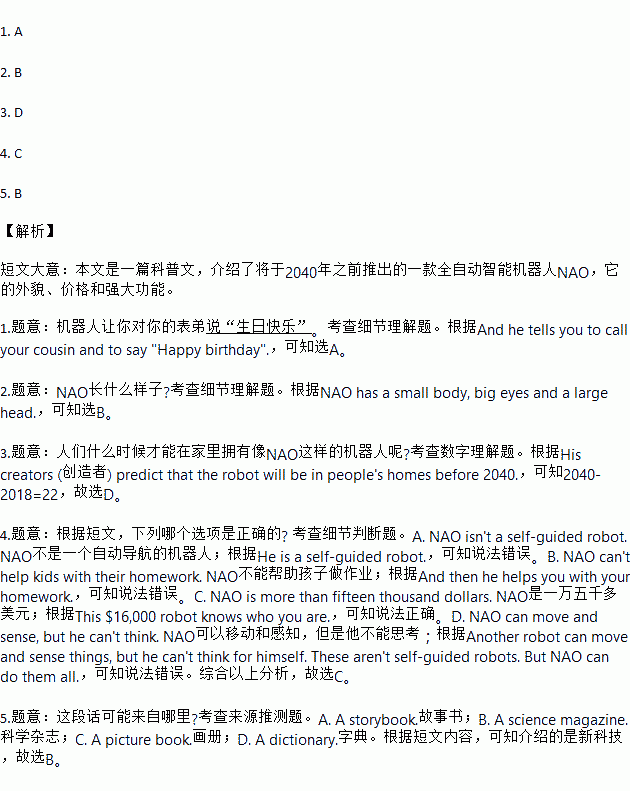题目内容
After a long day's study at school, you are very tired. So after school you go home to relax. When you get home, a robot greets you. He's happy to see you and helps you take your school things to your room. He listens to you talk about your school life and tells you a new joke. And he tells you to call your cousin and to say "Happy birthday". And then he helps you with your homework.
This is your future, and the robot's name is NAO. NAO has a small body, big eyes and a large head. He can walk and dance. He listens and talks, and he even learns and thinks for himself. His creators (创造者) predict that the robot will be in people's homes before 2040.
This $16,000 robot knows who you are. NAO can even expressemotions (表达情感). He is a self-guided robot. A self-guided robot can sense (感觉), think and act. Other robots might do two out of the three. For example, a robot might sense things using cameras and think using computers, but with no arms, he can't act. Another robot can move and sense things, but he can't think for himself. These aren't self-guided robots. But NAO can do them all.
1.The robot tells you to to your cousin.
A. say "Happy birthday" B. dance
C. send a birthday gift D. write
2.What does NAO look like?
A. He has a large body with a large head.
B. He has big eyes and a large head.
C. He has small eyes and a small head.
D. He has a small body with a small head.
3.When might people have robots like NAO in their homes?
A. In 2020. B. About 15 years later.
C. In 2030. D. About 25 years later.
4.Which of the following is TRUE according to the passage?
A. NAO isn't a self-guided robot.
B. NAO can't help kids with their homework.
C. NAO is more than fifteen thousand dollars.
D. NAO can move and sense, but he can't think.
5.Where is the passage probably from?
A. A storybook. B. A science magazine.
C. A picture book. D. A dictionary.
 ABC考王全优卷系列答案
ABC考王全优卷系列答案
